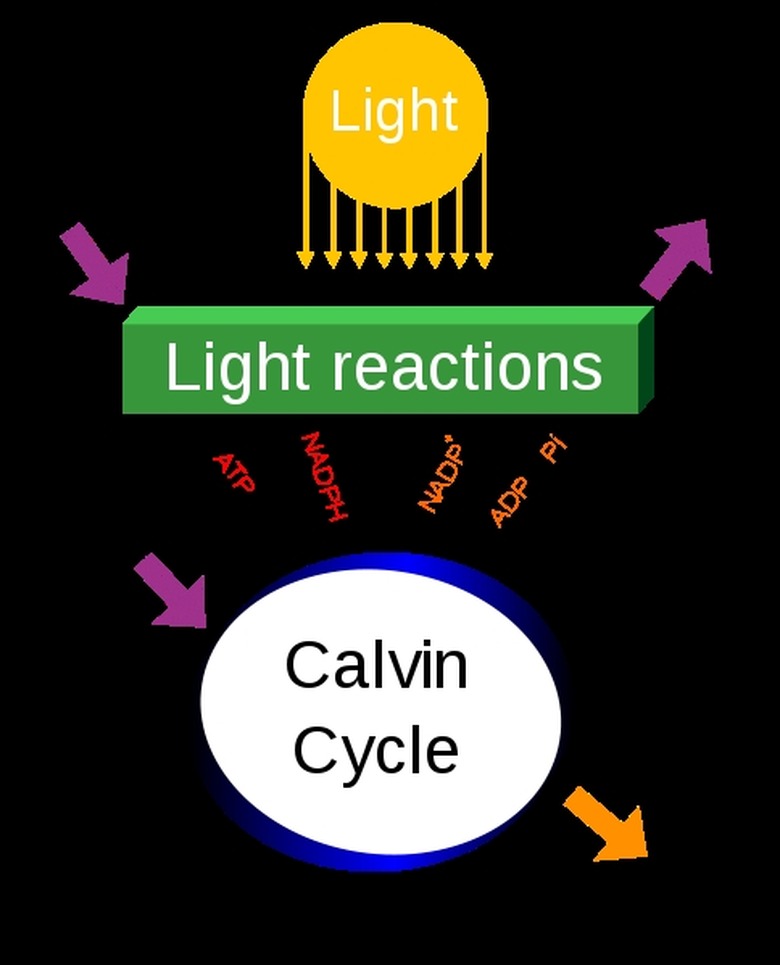Characteristics Of Photosynthesis
Photosynthesis is the primary energy conversion method that fuels the plant world and, by extension, the animal world. In converting light energy to chemical energy, photosynthesis is the core building block of almost all life on this planet. Understanding the basic elements of photosynthesis allows a greater understanding of the impact of energy sources on life.
The Need to Feed
The Need to Feed
Life is supported by spending energy. Without energy, life is impossible. However, energy, to be as useful as possible, must be present in a form that can be stored, moved and used as needed rather than being used only when present from an outside source. There are a number of forms of energy that can be used to support life–some bacteria appear to gain their energy in the form of heat from deep sources venting from under the Earth's crust, for example. However the most commonly available form of energy on the planet is from the sun, in the form of light. Photosynthesis is the process of collecting that energy and converting it into a chemical substance that can be manipulated to the advantage of the plant.
Chlorophyll
Chlorophyll
Chlorophyll is the conversion engine turning light energy into sugars. Chlorophyll is contained in membranes called chloroplasts, found in the interior of cells. The majority of the chlorophyll found in these chloroplasts collects and transfers light energy to two chlorophyll reaction centers in the network of chloroplasts. These pairs perform the actual work of conversion from light energy to sugars, using hydrogen and carbon, producing glucose, and putting off oxygen as a by-product of photosynthesis.
Process
Process
When light hits the chlorophyll in a leaf, its is passed to the paired chlorophylls in the reactive center, which use the energy directly to combine water, carbon and oxygen into a new physical arrangement: glucose, a simple plant sugar. The rearrangement, when disassembled, releases energy that can be used in other physical processes. There is energy lost in the process; no conversion of energy from one form to another is 100 percent efficient. The advantage of the process, however, is a form of energy that can be used as it is or further stored and manipulated.
Further Stages
Further Stages
After photosynthesis has occurred, the glucose in the plant may be converted into two more easily stored forms of chemical energy: complex carbohydrates and lipids, better known as starches and fats. Starch and fat are warehouse stores for a plant, which can be held or transported in phloem tissue for future uses.
Centrality of Plant Energy
Centrality of Plant Energy
Plants, and plants alone, produce food from light. No animal is capable of doing so. Thus, all plants are considered "producers" and animals "consumers" in the economy of energy use in bio-networks. Animals make use of plants as food, or eat other animals that once ate plants as food, but don't transform light into food themselves.
Furthermore even non-food-based forms of energy are most often based on plant use. Wood, coal and oil are forms of plant that created and stored energy. While humans have begun to learn to use other forms of energy, from water-generated energy to nuclear energy to direct conversion of solar energy, the majority of our economic strength is still based on the plant's ability to combine light energy with carbon, oxygen and water to produce glucose.
References
Cite This Article
MLA
Robinson, Peg. "Characteristics Of Photosynthesis" sciencing.com, https://www.sciencing.com/characteristics-photosynthesis-5437031/. 24 April 2017.
APA
Robinson, Peg. (2017, April 24). Characteristics Of Photosynthesis. sciencing.com. Retrieved from https://www.sciencing.com/characteristics-photosynthesis-5437031/
Chicago
Robinson, Peg. Characteristics Of Photosynthesis last modified March 24, 2022. https://www.sciencing.com/characteristics-photosynthesis-5437031/
